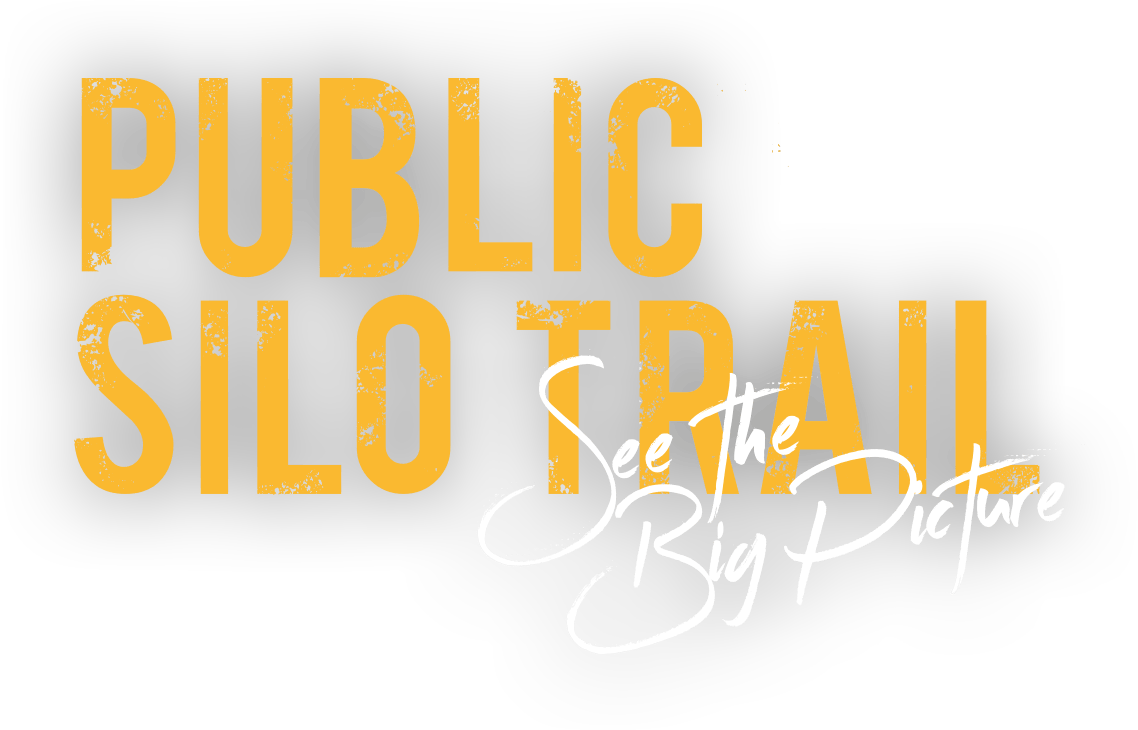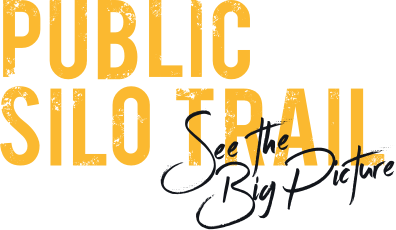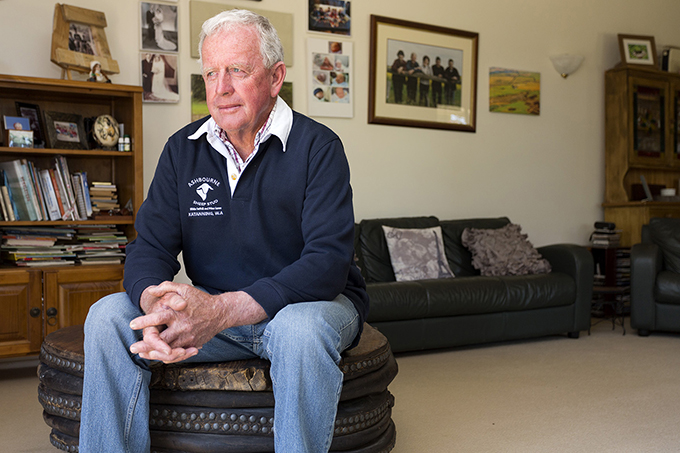Katanning Murals
Peter Kerin
We lived on our farm sixteen kilometers out of Katanning for forty years. Now our sons are running the farm and we shifted into town some ten years ago, but I still go out there almost every day. I just love it now, I don’t have to make decisions, I don’t have to pay accounts and I can come and go as I wish. I suppose farming is just in my blood. There’s not much money in it, but it’s enjoyable. We run some sheep. We sell about three hundred rams on an annual basis and then we grow most grains. Wheat. Barley. Oats. Lupins. Canola. Hay. The farm is about five thousand hectares. A lot of that is salt affected so there is something in the order of three thousand five hundred hectares of good country. My mother and father were about sixth or seventh generation farmers at least (that’s as far back as I can go in Ireland) and they were living in South Australia. The farm wasn’t terribly big over there and it as very, very steep country so they pulled up stakes in 1967 and shifted over along with my brother and two sisters when I was twenty. It was pretty exciting. I had never seen the West before. But it was a huge change in the type of agriculture. I don’t know if I would have the guts to do what they did. We almost went to the wall a few years later when wool prices collapsed and wheat quotas were introduced. It looked like we would have to sell the farm, but we just managed to climb out of that. Wool prices picked up, wheat quotas were repealed and we were able to stay. Daphne and I married in 1972. Now, our family keeps us here. We’ve got our two sons and five grandchildren
on the farm and a daughter who is an accountant in Albany with two grandsons there. We’ve got no desire to move. We’ve got a house here with a bit of dirt around it. You can go down the street, meet and talk to everyone and I’d love to see my grandkids grow up in the environment they are in. We didn’t think either of our sons were coming home to the farm. They both went to Muresk Agricultural College in Northam. I don’t know if they learned anything other than to party there, but I think they had a great time. They came home for a year after Muresk because I wanted them to see all the not so good sides of farming too. Up until then they’d been coming home
at seeding and harvest, driving the big machinery and doing all the good things, but between those times there
are parts to farming that are not so great. They both ended up getting good jobs and weren’t taking a lot
of interest in the farm, so we said to them you’ve got till age twenty eight to make a decision. If you don’t wish to come home to the farm we’ll probably sell up. We thought to ourselves, this is looking pretty good; we’re going
to have some good superannuation! Then one of them came home over Christmas and he hopped up on the
header and he said ‘I’ve made my decision. I’m going to come home’ and I said, “Terrific.” And the next day the
other son came home and he hopped up on the header with me and said exactly the same. They hadn’t spoken to
each other about it, they both just made exactly the same decision to come home. I think that’s made them better farmers. There are a lot of fellows my age who are not here now because it was sort of insisted by the family that they be farmers, and they never were truly farmers. They never had their hearts in it. My sons made a conscious decision at a mature age to come home to the farm. I think they came home because they wanted to raise their families in this sort of environment, and they’re doing a very good job I reckon. They’re doing a better job than I would have. I just love watching how they make decisions and how their education has helped them make those decisions. A piece of paper comes through the mail, I’ve forgotten what I’ve read before I get to the end of it. But they’ll read the first two lines and work out whether it’s worth keeping or rubbish. That’s an advantage of an education, they can work out things that are valuable and things that aren’t. It’s a huge gamble, farming. You get a
year like 2016 where you look like having your best year ever and then the frost decimated us. It just crucified us. We had what were potentially the best crops ever. I was sorry for the boys. Well they’re not boys, they’re forty and forty two or something. But they’d done everything right. They couldn’t have done any better, and then the frost just wiped our crops out. We had eight frosts over September. Usually you get one or two. In 2017 we just had two small ones. So it was just the complete opposite. But that’s how it is, we probably invest six to seven hundred
thousand dollars putting the crop in with no guarantee of getting great return. We’re lucky in Katanning. It’s a very stable area. We don’t get real bumper, high yields or real low ones. Even though 2016 was bad, we had a saviour. We’re one of the few people here that grow a lot of hay and that was what saved us, but generally we have fairly stable returns here so that was good. We’ve had some serious floods on the farm in 1982 and 2017, and even had to rescue sheep with a boat. In 1982 we had three hundred and eighty sheep stranded. We couldn’t find these sheep anywhere, and all the roads were closed, but we had to save them. So I chartered an aeroplane from Busselton where we were on holidays. I’d been doing a fair bit of flying of recent times, so I knew the country and some of the landmarks pretty well, but there was almost total cloud cover. We were looking and looking from this little two engine plane and then we suddenly broke through the clouds and there was the landing strip right in front of us, it was just such luck. We could try the same thing another fifty times and we would not be so lucky. When we got to the farm we took feed across in a little dingy to the stranded sheep where they were- just above the water level on a little bank about twenty metres long. The following day, we had to get these three hundred and eighty sheep off the small dam bank. I borrowed a dinghy from our fuel agent, and at daybreak the next day there were about seven other dinghies and ten men assembled, and we went across and corralled all these sheep. The water wasn’t all that deep but they wouldn’t jump off the bank, so we had to trap them five at a time, tip them on their backs in the dinghy, to get them across the water. We never lost a sheep and they later had the best lambing percentage of any mob. That was a fairly long day I must admit. My mother went to town and bought several cartons of beer and we sat down consumed those the rest of the afternoon. I think you often start off in local government thinking you’ve got to do something about an issue. That’s certainly how it was for me. Having played sport (I’m not any good at it but I loved it) I felt we had to do something about getting the town a sporting precinct. We had sport scattered all around the town. I thought the only way to achieve that was to get on Council. So I stood, and was elected. It wasn’t all smooth sailing. My first effort at making a change was a twelve to one loss in a thirteen member Council. It took us thirteen years for us to get a four million dollar Recreation Centre. We had to raise a million dollars from local donations to match other grants. That was a fair bit of work but we did it. For me, that led to fourteen years on Council, five of which were as Shire President. When we came here fifty years ago there were six hundred children at the local high school. Now I think there’s something in the order of three hundred. Some of the loss of children at the High School is down to the change in farming. Our farm, for example, was originally fourteen farms and they have been slowly bought up over many years to form one farm. So you’ve lost a lot of farming families out of the district. We also used to have St Andrew’s Hostel running here, which had a hundred and fifty to two hundred children, but then there was what happened with (serial WA paedophile) Dennis McKenna. That took the children out. Afterwards I was chairing the hostel committee for six or seven years, up until the time it closed – trying to get it back on the tracks again. It didn’t seem to matter what we did; we were trying to source children from out east and then we were moving down south to try and source children but as soon as you mentioned Katanning and St Andrews, parents didn’t want to send their children. It’s sad that it’s not being used. But people were harmed there and I feel for them. They would love to see the place bulldozed because they’ve got terrible memories of it. So that really knocked the town around, emotionally and financially. We’ve had a lot of refugees and different cultures come into the town. In 1974 our then Minister for Agriculture Dick Old heard they were shutting down Christmas Island because the phosphate reserves were depleting, and he managed to have a lot of the Christmas Islanders there transferred to Katanning to staff the meat works. So the population is basically about the same as it has been for the past fifty years in Katanning but the makeup of it is significantly different.


